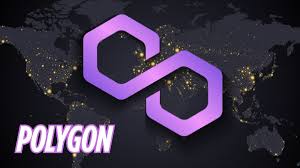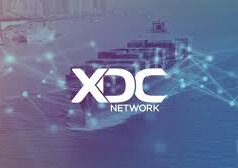As the cryptocurrency landscape evolves, scaling solutions have become critical to addressing the limitations of major blockchains like Ethereum. Among these, Polygon (MATIC) has emerged as a standout, often dubbed “Ethereum’s internet of blockchains.” On July 12, 2025, with Polygon’s market cap hovering around $4.62 billion and its token price at $0.496, it continues to play a pivotal role in the Web3 ecosystem. This blog post dives into what makes Polygon unique, how it differs from other blockchains, and why it’s a cornerstone for decentralized applications (dApps) and developers.
What Is Polygon?
Polygon is a Layer-2 scaling solution for Ethereum, designed to enhance its speed, reduce transaction costs, and maintain robust security without compromising decentralization. Initially launched as Matic Network in 2017, Polygon has evolved into a comprehensive ecosystem that includes a proof-of-stake (PoS) sidechain, rollups, and tools for developers to build scalable dApps. Its native token, $MATIC, powers the network, handling transaction fees, staking, and governance.
Unlike standalone Layer-1 blockchains like Solana or Binance Smart Chain, Polygon operates as a complementary layer to Ethereum, leveraging its security while offering faster and cheaper transactions. With over 7,000 dApps, 3 million daily transactions, and partnerships with brands like Starbucks and Disney, Polygon is a hub for DeFi, NFTs, gaming, and enterprise solutions.
How Polygon Differs from Other Blockchains
Polygon’s unique architecture and focus set it apart from other blockchains. Here’s a detailed look at what makes it distinct:
1. Layer-2 Scaling for Ethereum
Unlike Layer-1 blockchains like Ethereum, Solana, or Cardano, which operate independently, Polygon is a Layer-2 solution that enhances Ethereum’s capabilities. It processes transactions off-chain on its PoS sidechain or rollups (like zkEVM or Optimistic Rollups) and settles them on Ethereum’s mainnet, ensuring security. This hybrid approach delivers:
- Speed: Polygon processes up to 65,000 transactions per second (TPS) on its PoS chain, compared to Ethereum’s 15–30 TPS.
- Low Costs: Transaction fees on Polygon are often less than $0.01, versus Ethereum’s $1–$50 gas fees during peak congestion.
- Ethereum Compatibility: Polygon is fully compatible with Ethereum’s tools, like MetaMask and Solidity, making it easy for developers to port dApps.
By contrast, Layer-1 chains like Solana (65,000 TPS but centralized validator structure) or Binance Smart Chain (BSC, ~100 TPS) operate independently, sacrificing some decentralization for speed. Polygon’s reliance on Ethereum’s security makes it a unique middle ground.
2. Flexible Architecture: More Than Just a Sidechain
Polygon’s ecosystem is a suite of solutions, unlike single-protocol blockchains. It offers:
- Polygon PoS: A sidechain with fast, low-cost transactions, secured by validators and Ethereum checkpoints.
- Polygon zkEVM: A zero-knowledge rollup launched in 2023, offering Ethereum-equivalent security with lower costs and higher throughput.
- Polygon Miden: A client-side zk-rollup for privacy-focused applications.
- Polygon CDK: A Chain Development Kit for building custom Layer-2 chains connected to Ethereum.
This modularity contrasts with blockchains like Avalanche or Cosmos, which focus on subnets or app-specific chains but lack Polygon’s deep Ethereum integration. For example, Avalanche’s subnets are independent, while Polygon’s solutions inherit Ethereum’s security, making it ideal for Ethereum-centric developers.
3. Ecosystem and Developer Support
Polygon’s developer-friendly ecosystem is a key differentiator. It supports Ethereum’s EVM (Ethereum Virtual Machine), allowing developers to deploy dApps with minimal changes. Its Polygon SDK and APIs simplify building interoperable, scalable applications. Over 7,000 dApps, including Aave, OpenSea, and Decentraland, run on Polygon, with 1.3 billion transactions processed to date.
Compare this to Cardano, which uses a unique Haskell-based Plutus language, creating a steeper learning curve, or Solana, which requires Rust programming. Polygon’s EVM compatibility and extensive grants (over $150 million via Polygon Village) make it a go-to for developers, rivaling BSC’s developer ecosystem but with stronger Ethereum ties.
4. Eco-Friendly Design
Polygon’s PoS consensus is significantly more energy-efficient than proof-of-work (PoW) blockchains like Bitcoin, which consume vast amounts of electricity. A 2021 study estimated Polygon’s energy usage at 0.00079 kWh per transaction, compared to Bitcoin’s 1,173 kWh. Even compared to other PoS chains like Tezos or Algorand, Polygon’s Layer-2 approach reduces computational overhead by offloading processing from Ethereum. Its zkEVM rollup further optimizes energy use, aligning with the growing demand for sustainable blockchain solutions.
5. Interoperability and Web3 Focus
Polygon’s vision extends beyond scaling to creating an “internet of blockchains.” Through partnerships with LayerZero and Chainlink, it enables cross-chain interoperability, connecting to 90+ blockchains. This contrasts with siloed Layer-1s like Solana, which prioritize internal ecosystems. Polygon’s focus on DePIN (Decentralized Physical Infrastructure Networks), NFTs, and gaming—evident in collaborations with Reddit and Instagram—positions it as a Web3 leader.
For instance, peaq, a DePIN-focused blockchain recently listed on Binance Alpha, operates independently, but Polygon’s infrastructure could theoretically support similar use cases with its zkEVM or CDK, offering developers more flexibility within Ethereum’s orbit.
Polygon’s Market Position in 2025
As of July 12, 2025, Polygon’s $MATIC token trades at $0.496, down 83% from its all-time high of $2.92 in December 2021, reflecting broader market corrections. However, its $4.62 billion market cap ranks it among the top 20 cryptocurrencies, with 9.3 billion of its 10 billion total supply in circulation. Recent X posts highlight bullish sentiment, with @CryptoBull noting Polygon’s role in Ethereum’s scaling roadmap, predicting a potential rebound to $1 if Bitcoin maintains its $118,000 level.
Polygon’s fundamentals are strong: 400,000 daily active users, $150 million in DeFi TVL, and integrations with major enterprises. Its zkEVM, launched in March 2023, has processed over 10 million transactions, signaling robust adoption. However, competition from Arbitrum and Optimism, other Ethereum Layer-2s, poses a challenge. Arbitrum’s higher TVL ($2.5 billion vs. Polygon’s $150 million) and Optimism’s governance model attract some developers, but Polygon’s broader toolkit and enterprise partnerships give it an edge.
Risks and Challenges
Despite its strengths, Polygon faces hurdles:
- Competition: Arbitrum, Optimism, and zkSync are vying for Layer-2 dominance, while Layer-1s like Solana offer high-speed alternatives.
- Price Volatility: $MATIC’s 83% drop from its peak underscores market risks, especially with macroeconomic factors like proposed U.S. tariffs impacting sentiment.
- Ethereum Dependency: Polygon’s reliance on Ethereum means any mainnet congestion or gas spikes could affect its performance, though zkEVM mitigates this.
- Adoption Risks: While Polygon’s ecosystem is vast, scaling DePIN and enterprise use cases requires sustained developer and user growth.
Why Polygon Matters for Investors and Developers
For investors, Polygon offers exposure to Ethereum’s growth without the high fees. Its low-cost transactions and dApp ecosystem make $MATIC a compelling altcoin, though its volatility demands careful risk management. Technical analysis from X suggests support at $0.48 and resistance at $0.55, with a breakout possible if market sentiment remains bullish.
For developers, Polygon is a playground for innovation. Its EVM compatibility, low fees, and tools like Polygon CDK make it ideal for building dApps in DeFi, gaming, or DePIN. The Polygon Village grant program and partnerships with Web2 giants provide resources and visibility, unlike more isolated chains like Tezos.
How to Engage with Polygon
- Investing in $MATIC: Trade on exchanges like Binance or Coinbase, but set stop-loss orders to manage volatility. Monitor X for sentiment, as posts from @PolygonInsider often highlight updates.
- Building on Polygon: Use the Polygon SDK or zkEVM to deploy dApps. Explore Polygon Village for grants and technical support.
- Using Polygon dApps: Try Aave or QuickSwap for DeFi, or Axie Infinity for gaming, to experience Polygon’s low-cost transactions firsthand.
- Stay Informed: Follow Polygon’s official channels and X posts from users like @Web3Vibes for real-time insights.
Final Thoughts
Polygon’s unique position as an Ethereum Layer-2 solution sets it apart in a crowded blockchain landscape. Its high-speed, low-cost transactions, flexible architecture, and developer-friendly ecosystem make it a powerhouse for Web3 innovation. Unlike standalone Layer-1s like Solana or Cardano, Polygon enhances Ethereum’s capabilities while maintaining its security, offering a balance of scalability and decentralization. From powering 7,000+ dApps to enabling enterprise solutions for Disney and Starbucks, Polygon is a linchpin in the decentralized future.
For investors and developers, Polygon presents a compelling opportunity, but its volatility and competitive pressures require caution. As the crypto market evolves in 2025, with Bitcoin at $118,000 and Web3 adoption surging, Polygon’s role as a scalable, eco-friendly, and interoperable blockchain makes it a project to watch. Whether you’re trading $MATIC or building the next big dApp, Polygon offers a gateway to the future of blockchain technology.
Sources:
- Web: polygon.technology, coingecko.com, coinmarketcap.com, cryptoslate.com, defillama.com
- X Posts: @CryptoBull, @PolygonInsider, @Web3Vibes




























Yo, this post is lit! Polygon’s vibe as Ethereum’s sidekick is so cool, especially with those low gas fees
The Polygon SDK explanation was spot-on for understanding why devs love it. Great job demystifying L2 scaling!